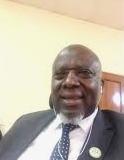A Contrastive Analysis of Adjectives in English and Idọma Sentence Structures
Implications for Language Education
DOI:
https://doi.org/10.53449/ije.v7i1.350Keywords:
Idọma adjectives, Idọma sentence, modification, sentence structureAbstract
English Language and its structural patterns share both similar and different features when contrasted with other languages. In this paper, the syntactic patterns of modification of the Noun Phrase (NP), a term rooted in Chomsky’s grammatical category, are examined in English and Idọma languages. The aim is to highlight potential implications for the Idọma learners of English language as a second language. Using Government and Binding theory for data analysis, the study draws insights from Contrastive Analysis. To provide data for analysis, two episodes of Okonone, a radio programme presented in Idọma and aired on Joy FM, are recorded and transcribed. Findings reveal that both languages have predicative adjectives and they function as subject and object complements. Adjectives can also occur after the indefinite pronouns in both English and Idọma sentence structures. Unlike in English language, adjectives are observed to predominantly occur post-nominally in Idọma Syntax. Similarly, while nouns can be used as adjectives in the English sentence structure, Idọma language does not provide for such a usage. To compare adjectives in English, standard morphological processes allow users to generate single words. Since Idọma speakers rely heavily on post-nominal modification, comparison is often embedded within the adjectival structure using two or three words. The study concludes that these similarities aid smooth learning of the English language while the dissimilarities impede the proficiency of Idọma learners of the English language.
Downloads
References
Abushihab, I. (2012). Syntactic contrastive analysis of Turkish and English. DACOROMANIA, 17(2), 230-244.
Adejoh, M. O. (2014). Idọma Noun Phrases: Syntactic Analysis [Unpublished. PhD thesis]. Department of Languages and Linguistics, Nasarawa State University, Keffi.
Adelabu, B. (2014). A contrastive analysis of adjectives in English and Yoruba. International Journal of Education and Research, 2(4).
Adesanoye, F. (2004). The English language in Nigeria: The case of a vanishing model?
Owolabi, K., & Dasylva, A. (2004). Forms and functions of English and indigenous languages in Nigeria. Ibadan. Group Publishers.
Bamgbose, A. (1991). Language and the Nation: The Language question in Sub-saharan Africa. Edinburgh: Edinburgh University Press.
Bello, O. (2007). Code-mixing or code-mix up: A sociolinguistic study of semi-educated Yoruba-English bilinguals. In Adeyanju, D. (Ed). Sociolinguists in the Nigerian Context. Ile-Ife. OAU Press.
Brinton, L. J., & Brinton, D. M. (2015). The linguistic structure of modern English (2nd ed.). John Benjamins Publishing Company.
Chomsky, N. (1957). Syntactic structures. Berlin: Mouton de Gruyter.
Chomsky, N. (1965). Aspects of the Theory of Syntax. Massachusetts: M.I.T. Press.
Chomsky, N. (1982). Some concepts and consequences of the theory of Government and Binding. Chicago: MIT Press.
Cook, V. (2016). Second Language learning and language teaching. Routledge.
Downing, A. & Locke, P. (2006). English grammar: A university course (2nd ed.). Routledge.
Ellis, R. (2015). Understanding Second Language Acquisition. Oxford University Press.
Ellis, R., & Shintani, N. (2014). Exploring language pedagogy through Second Language Acquisition research. Routledge.
Haegeman, L. (1994). Introduction to Government and Binding Theory (2nd ed.). UK: Blackwell Publishers Ltd.
Huddleston, R., & Pullum, G. K. (2002). The Cambridge Grammar of the English Language. Cambridge University Press.
Kadir, A. K. (2015). ‘A contrastive analysis of between Mekongga and English Syntax.’International Journal of Language and Linguistics, 3(3), 110-115.
Kanno, Y., & Norton, B. (2017). Language, education, and neoliberalism: Critical studies in sociolinguistics. Routledge.
Kim, J. (2010). A contrastive analysis between English and Korean comparative constructions. English Language and Linguistics,16(1), 137-162.
Lado, R (1957). Linguistics across cultures: Applied linguistics for language teachers. Ann Arbor: University of Michigan Press.
Leech, G. (2006). A glossary of English grammar. Edinburgh University Press Ltd.
Momani, M. M., & Altaher, A. M. (2015). A contrastive analysis of English and Arabic from a syntactic perspective. Canadian Open English and Literature Journal, 2(1), 1-8.
Maamuujav, U., Olson, C. B., & Chung, H. (2021). Syntactic and lexical features of adolescent L2 students’ academic writing. Journal of Second. Language. Writing. 53:100822. https://doi.org/10.1016/j.jslw.2021.100822
Ndimele, O. (1999). Morphology and syntax. Port Harcourt: Emhai Printing & Publishing Co.
Norton, B. (2013). Identity and language learning: Extending the conversation (2nd ed.). Multilingual Matters.
Odlin, T. (2015). Language transfer: Cross-linguistic influence in language learning (2nd ed.). Cambridge: Cambridge University Press.
Olagbaju, O. O. (2014). ‘Multilingual education in Nigeria: Policy, practice, challenges and solutions.’ Journal of Education and Practice. 5(6) 66-73.
Olayemi, O.T. (2010). Some Common Errors of Nigerian ESL Users. Dare, S and Balogun, T (eds). Techniques and Mechanics of Practical Discourse. Ago Iwoye: Olabisi Onabanjo University Press.
Olayemi, O. T. (2014). Like as a Substitute for Content Words in Nigerian English Usage. Awka Journal of English Language and Literary Studies. 5 (1) 83-97.
Olayemi, O. T. (2019). Gaps and absences in the English expressions of some staff and students in an English as a Second Language setting. Journal of the Linguistic Association of Nigeria, 22(2), 228-247.
Raji, E. B. (2014). Focus construction in Otukpa Dialect of the Idọma Language [Masters Thesis]. Department of Linguistics and African Languages, University of Ibadan, Ibadan.
Salah, R. (2021). Jordanian University students’ use of English: Urban-rural dichotomy and university location. Advances in Literary Study, 9, 105-113. https://doi.org/10.4236/als.2021.93012
Skehan, P. (2018). Cognitive approaches to Second Language learning. Oxford: Oxford University Press.
Stockwell, G. (2015). Computer-assisted language learning: Diversity in research and practice. Cambridge: Cambridge University Press.
Swan, M. (2005). Practical English usage. Oxford: Oxford University Press
Udemmadu, T., & Chinyeaka, L. (2017). A contrastive study of English and Igbo structures. Interdiscplinary Journal of African & Asian Studies, 1(3).
Umaru, J. Y. (2016). The syntax of relative clause constructions in Idó᷂mà: A Government and Binding approach [Unpublished Ph. D Thesis]. Nassarawa State University, Lafia.
Yule, G. (2010). The study of language. New York: Cambridge University Press.
Van Valin, Jr. R. D. (2001). An introduction to syntax. New York: Cambridge University Press.
Zhang, C. & Kang, S. (2022) A comparative study on lexical and syntactic features of ESL versus EFL learners’ writing. Frontier Psychology 13:1002090. https://doi.org/10.3389/fpsyg.2022.1002090
Downloads
Published
Issue
Section
License
Copyright (c) 2024 Olayemi Oluwakemi Titilola, Amuta Sunday

This work is licensed under a Creative Commons Attribution-NoDerivatives 4.0 International License.








